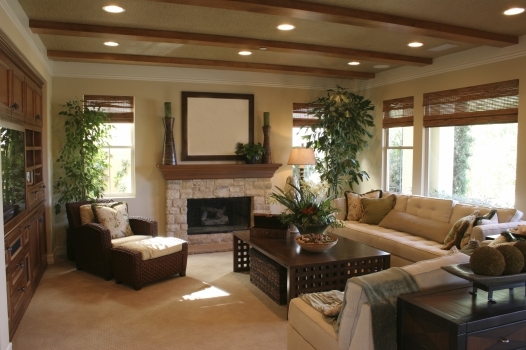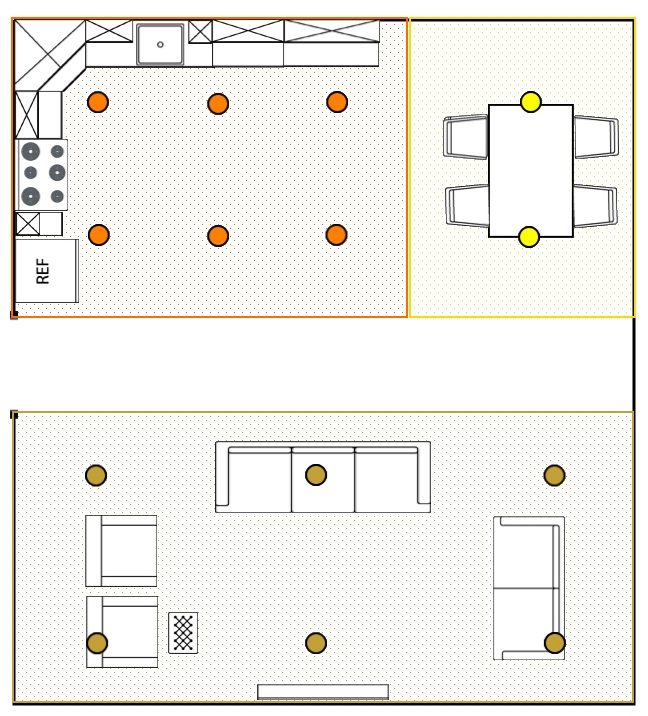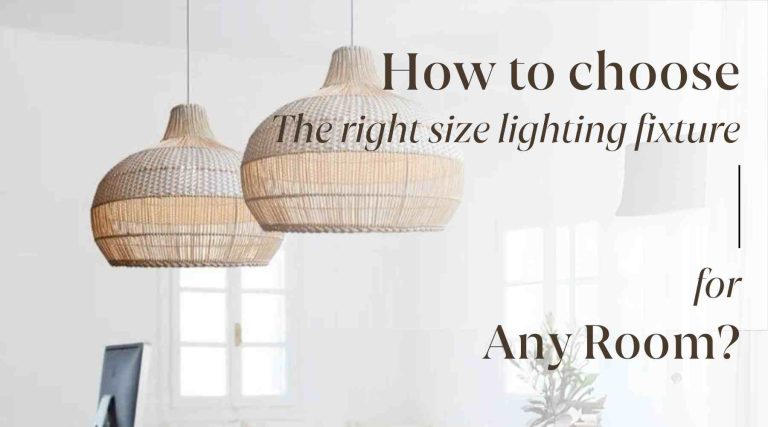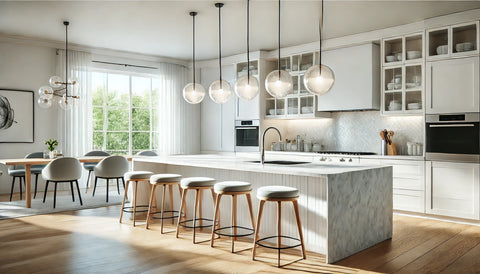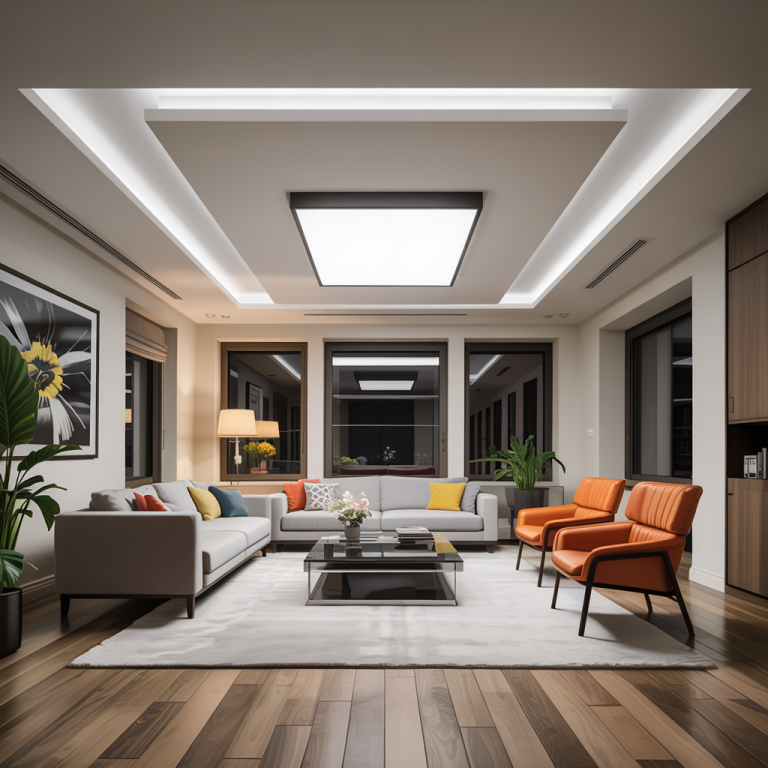How Many Can Lights in a 20X20 Room? Illuminate Perfectly
How many can lights in a 20X20 Room? A 20×20 room (400 sq ft) typically needs 8 to 10 can lights, spaced about 4 to 5 feet apart. Use one 6-inch can light per 40–50 sq ft for general lighting. Adjust based on ceiling height, room function, and brightness preference. Dimmer switches offer added flexibility.
If you’re trying to light up a 20×20 room, you’re likely wondering about the magic number that will transform your space into a well-lit haven. You’re not alone in this quest, and you’re about to find out how to make the best lighting decision for your room.
The right number of can lights can change everything. It can make your room feel more inviting, accentuate your decor, and even impact your mood. But getting it wrong might leave you with shadows lurking in corners or an overwhelming brightness that washes out the room’s features. By grasping the basics and considering the practical insights shared here, you’ll be equipped to light your space perfectly. Keep reading to discover the formula for achieving that ideal illumination, ensuring your room shines at its best.
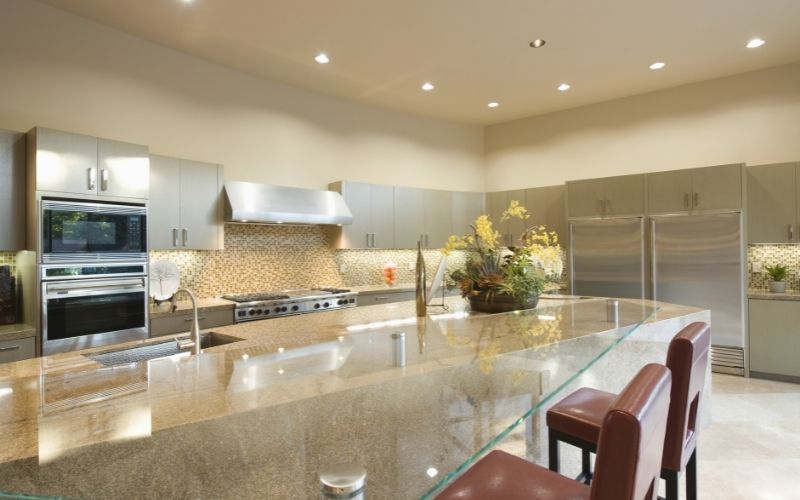
Credit: www.bazzsmarthome.ca
How Many Can Lights in a 20X20 Room?
Optimal Lighting Layout
Creating an optimal lighting layout for a 20×20 room can transform the space into a haven of warmth and functionality. Whether you’re redesigning your living room, setting up a home office, or simply upgrading your kitchen, getting the lighting right is crucial. You might wonder how many can lights are needed and where to place them for the best effect. Let’s explore some practical insights to achieve that perfect glow.
Read More: How to Light a Living Room With No Overhead Lighting: Expert Tips
Understanding Your Room’s Needs
First, consider how you use the space. Is it a cozy living room or a busy kitchen? Each room has unique requirements. A living room may need softer, ambient light, while a kitchen benefits from bright, focused illumination. Take a moment to envision your room’s activities and mood.
Think about the furniture and decor. Are there specific areas you want to highlight, like a reading nook or an art piece? Lighting can enhance these features and add character to your room.
Calculating The Number Of Can Lights
Here’s a simple formula: multiply the square footage of your room by 1.5 to determine the total wattage needed. For a 20×20 room, that’s 400 square feet, requiring around 600 watts. Divide this by the wattage of the bulbs you plan to use to find the number of can lights needed. For instance, using 60-watt bulbs, you might need around 10 lights.
Adjust based on your room’s natural light and existing fixtures. If you have large windows or additional lamps, you might need fewer can lights.
Strategic Placement Of Can Lights
Place lights evenly to avoid dark spots. A grid pattern works well, starting about three feet from the walls. This ensures balanced coverage and minimizes shadows. You might want to install dimmers for adjustable brightness, allowing you to set the mood for different occasions.
Consider layering light for depth. Combine ambient lights with task lights for specific areas like desks or countertops. This approach creates a dynamic and versatile lighting setup.
Balancing Aesthetics And Functionality
Can lights are sleek and unobtrusive, but they should complement your room’s style. Choose trims that match your decor. Are your fixtures modern or vintage? The right trim can enhance your room’s aesthetic appeal.
Experiment with bulb temperatures. Warm lights foster a cozy atmosphere, while cool lights energize and brighten the space. Find a balance that suits your taste and needs.
Have you ever walked into a room and felt instantly comfortable? Proper lighting might have played a big role. Consider how your lighting choices impact your guests and your own experience in the room.
Final Thoughts: Tailoring To Your Space
Every room tells a story, and lighting plays a crucial role in that narrative. How do you want your room to feel? Lighting is a tool to craft your desired atmosphere.
As you plan your lighting layout, remember that your choices can elevate the room’s functionality and beauty. Why not take a moment to think about how lighting impacts your daily life? The right setup can make all the difference.
Calculating Required Lumens
Calculating the required lumens for a room is essential for proper lighting. Lumens measure the total amount of visible light a bulb emits. Determining the right number of lumens ensures your space is well-lit and comfortable. In a 20×20 room, understanding lumens helps decide the number of can lights needed.
How Many Lumens Do You Need?
For a living room, aim for 10-20 lumens per square foot. A 20×20 room has 400 square feet. So, you need between 4,000 to 8,000 lumens. This range depends on the room’s purpose and desired brightness.
Choosing The Right Bulbs
LED bulbs are a popular choice for can lights. They offer high lumens with low energy use. A single LED bulb can produce between 800 to 1,600 lumens. This makes them efficient and cost-effective for large spaces.
Calculating The Number Of Can Lights
To find the number of can lights, divide total needed lumens by lumens per bulb. For example, using bulbs that emit 1,000 lumens each, you need 4 to 8 bulbs. This calculation ensures even light distribution throughout the room.
Considering Light Placement
Placement affects how well-lit a room appears. Space can lights evenly to avoid dark spots. Install them in a grid pattern for consistent coverage. This layout works well in most square or rectangular rooms.
Choosing The Right Can Light Size
Choosing the right can light size is crucial for your room’s ambiance. The size affects both the light spread and intensity. It ensures optimal illumination without overwhelming the space. Many homeowners make the mistake of selecting the wrong size. This can lead to uneven lighting or excessive glare. Understanding can light sizes helps in achieving the perfect balance. Let’s explore the factors to consider when choosing the right can light size for your 20×20 room.
Read More: Can You Light a Candle in a Hotel Room? Safety Tips
Understanding Can Light Sizes
Can lights come in various sizes. The most common are 4, 5, and 6 inches. Each size serves a different purpose. Smaller lights are ideal for task lighting. Larger ones cover more area. Consider the ceiling height when selecting a size. Higher ceilings may need larger lights.
Room Function And Light Size
The room’s function influences the light size. In a kitchen, smaller lights work well for focused areas. A living room benefits from larger lights. They provide ambient lighting. Think about how you use the room. This guides your choice in light size.
Spacing And Light Size
Light spacing affects the room’s brightness. Larger lights need more space between them. Smaller lights can be closer together. Proper spacing prevents shadows. It ensures a well-lit environment. Balance is key in spacing and size.
Energy Efficiency Considerations
Light size impacts energy consumption. Larger lights may use more power. Opt for energy-efficient bulbs. They offer savings on electricity bills. LED bulbs are a good choice. They last longer and consume less energy.
Spacing And Placement Tips
Creating the perfect lighting in a 20×20 room requires careful planning. Proper spacing and placement of can lights can transform the ambiance. Well-placed lights ensure even illumination, highlighting features and reducing shadows. Let’s explore some effective spacing and placement tips.
Spacing Considerations For Optimal Lighting
For a balanced look, space can lights evenly. A general rule is to divide the ceiling height by two. For an 8-foot ceiling, space lights about 4 feet apart. This spacing creates uniform light distribution.
Creating Zones With Light Placement
Think about the room’s function when placing can lights. Use lighting zones for different activities. In a living area, focus lights around seating zones. In a kitchen, highlight workspaces like counters and islands.
Avoiding Shadows And Dark Corners
Position lights to eliminate shadows and dark spots. Place can lights near walls to brighten room edges. This technique opens up the space visually.
Considering Dimmer Switches For Versatility
Install dimmer switches to adjust light levels as needed. Dimmers provide flexibility for various activities. This feature is useful for creating a cozy atmosphere or bright task lighting.
Emphasizing Key Architectural Features
Use can lights to accentuate architectural features. Highlight details like fireplaces, artwork, or textured walls. Well-placed lights draw attention and add depth to the space.

Credit: blog.recessedlighting.com
Frequently Asked Questions
How Many Recessed Lights Per Room Size?
Determine recessed light quantity by room size. Use one fixture for every 4-6 square feet. Calculate based on layout and ceiling height for optimal brightness.
Should I Install 4 Or 6 Recessed Lights?
Choose 4 recessed lights for smaller rooms or focused lighting. Opt for 6 lights in larger spaces for balanced illumination. Consider room size, layout, and desired brightness. Proper spacing ensures efficient coverage and enhances ambiance. Consult a lighting professional for personalized advice.
How Many Recessed Lights For 100 Sq Ft?
Install 4 to 6 recessed lights for a well-lit 100 sq ft area. Consider ceiling height and room purpose. Use dimmable LED bulbs for flexibility and energy efficiency. Proper spacing ensures balanced illumination without shadows. Always consult a lighting expert for optimal results.
How Do You Calculate The Number Of Lights In A Room?
Measure the room’s square footage. Multiply by 1. 5 to get the total wattage needed. Divide by bulb wattage to find the number of lights. Adjust for tasks or mood lighting as needed. Use appropriate fixtures for optimal illumination.
How Many Can Lights For A 20×20 Room?
A 20×20 room typically needs 8 to 12 can lights. It depends on light preference and room usage.
Conclusion
Determining the right number of can lights is crucial. It affects room brightness. For a 20×20 room, balance is key. Too many lights can overwhelm. Too few leave it dim. Consider room purpose and personal preference. Experts suggest starting with eight to ten lights.
Adjust based on light intensity and design. Always test placement before finalizing. Proper lighting enhances comfort and ambiance. Experiment to find what suits your style. Remember, lighting changes the room’s feel. Choose wisely for the best results. Happy lighting!

